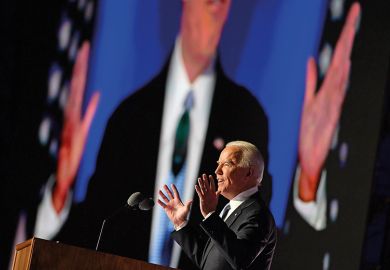In three years Australia will host a third more international students than it did in 2019, and universities must set money aside to support them, according to veteran researcher and strategist Rob Lawrence.
Mr Lawrence has sketched optimistic prospects for Australia’s international education industry, saying that “all the indicators” point to a massive rebound by 2023. He told the Remaking HE conference that the industry would recover from deferrals in early 2020, non-starters in late 2020 and a dearth of new arrivals at the beginning of 2021.
“We’ll have delayed commencement rates in 2021 starting to rebuild in 2022, provided we have a vaccine,” he said. Numbers would reach around 70 per cent of 2019 levels in 2021, 90 per cent in 2022 and 135 per cent in 2023.
“Education is still highly regarded, valued and wanted because the return on investment is still great,” Mr Lawrence said. “We are seen globally as a Covid-safe option, especially compared with the UK and the USA.
“We’ve been seen to be compliant, supportive, strong willed, strong leadership. We have come out the other side. I’ll be very surprised if we see a third wave, with the abilities we now have to manage the situation.”
He said the “negativity” of outbreaks in Europe and North America had influenced perceptions around the world, contrasting with images from Australia – where international students had uploaded around quarter of a million “smiley” photos of their experiences every day in 2019.
“Those images are going to recover. The positivities are starting to come across – Melbourne streets reopening, people back on the train.”
Overseas enrolments reached a record 841,000 in Australia in 2019 after surging 35 per cent over the previous three years. Higher education numbers grew particularly strongly, snowballing by 44 per cent and delivering the lion’s share of the country’s A$40.3 billion (£22.2 billion) earnings from international education.
Some universities collected more than A$1 billion each in foreign students’ fees. Mr Lawrence said they should divert 2 per cent of international tuition fee income into a dedicated fund to support international students’ well-being, likening the idea to the taxpayer-supported medical insurance available automatically to domestic students. “A couple of vice-chancellors are seriously thinking about this,” he said.
Mr Lawrence said support needs were far higher for overseas students than their domestic counterparts. “When an international student cries for help, they are 10 times more in need of help, immediately,” he told the conference.
Educational institutions needed to embrace Covid as a “catalyst for change”, mimicking their efforts after previous crises. They had introduced scholarships and other support mechanisms following the Asian economic crisis of the late 1990s, the SARS epidemic of 2003 and a crash in Indian student numbers a decade ago, he said.
Joe Chicharo, senior deputy vice-chancellor at the University of Wollongong, said he would “certainly support” the idea. He said many of Wollongong’s Libyan students had needed help when they became stranded without funds from home during the 2011 civil war.
“These things happen and institutions need to assist students when they’re in a crisis,” Professor Chicharo told the conference. “It’s our duty of care.”
Register to continue
Why register?
- Registration is free and only takes a moment
- Once registered, you can read 3 articles a month
- Sign up for our newsletter
Subscribe
Or subscribe for unlimited access to:
- Unlimited access to news, views, insights & reviews
- Digital editions
- Digital access to THE’s university and college rankings analysis
Already registered or a current subscriber?









